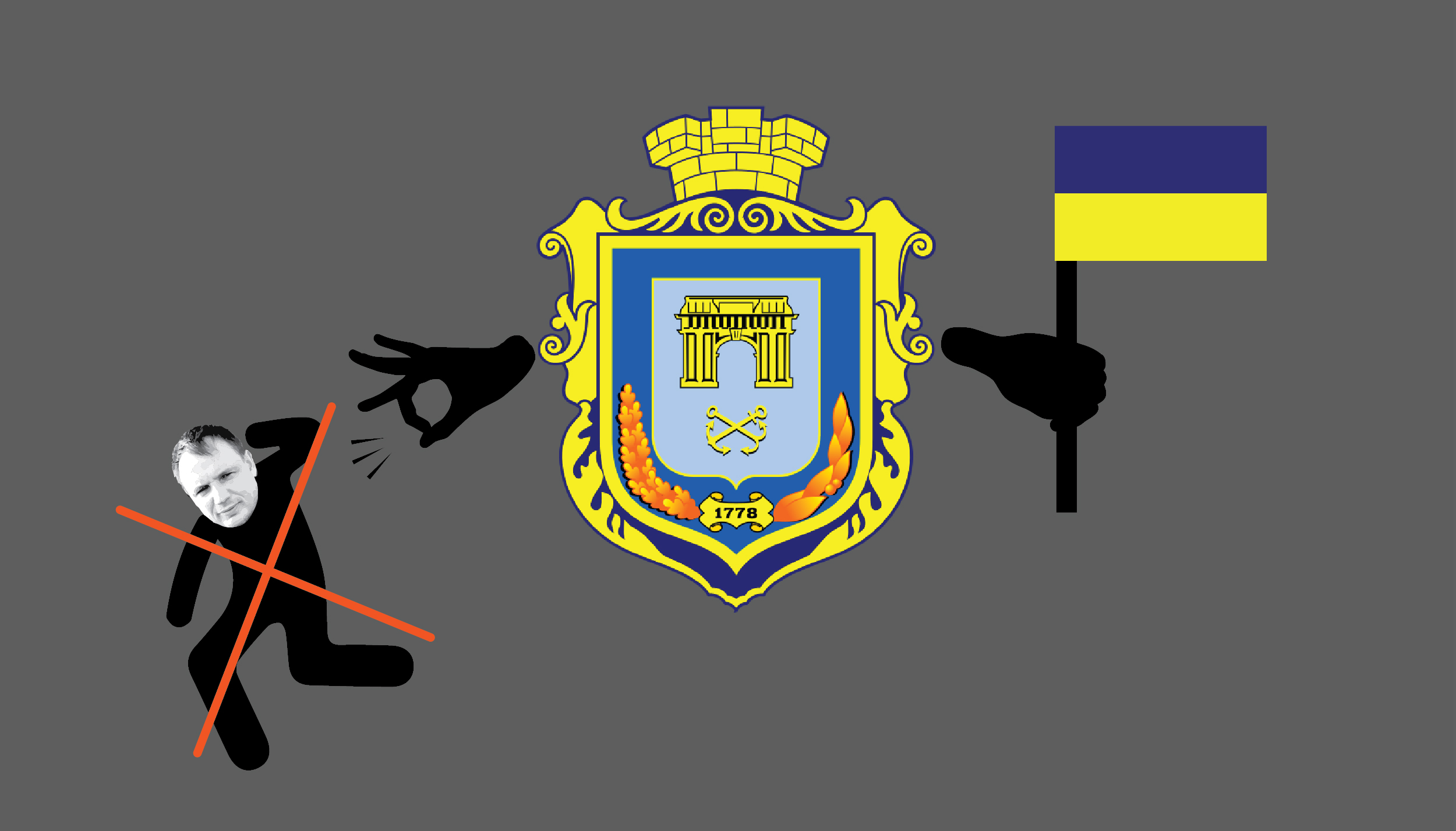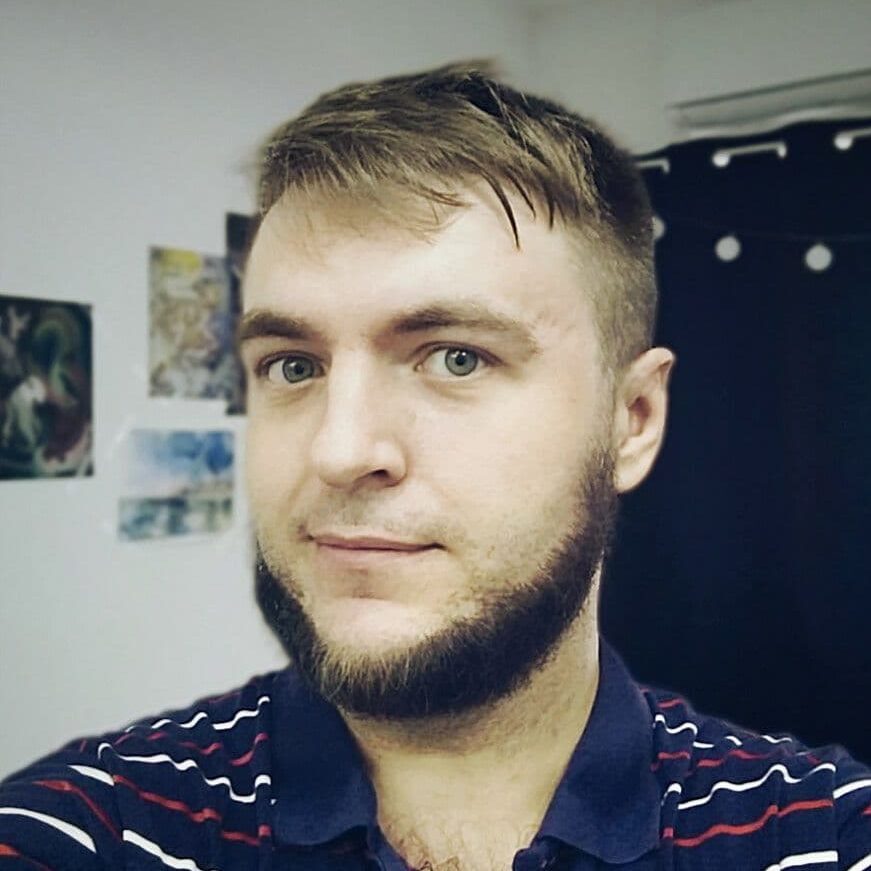Українською читайте тут.
On the second anniversary of Kherson's liberation, we recount how Russian propaganda shifted from assurances that "Russia is in Kherson forever" to lamenting the "city occupied by Ukraine" and calling to "crush" Ukrainian resistance in the temporarily occupied territories.
From November 8–12, 2022, the Kherson offensive operation, which had begun in late August, culminated in Ukrainian forces reaching the right bank of the Dnipro River. On November 11, the Ukrainian Armed Forces liberated the city of Kherson. The only regional capital seized by Russian forces at the onset of the full-scale invasion had remained under Russian control for 256 days. Russian propaganda sought to establish in the minds of both Russians and residents of the occupied territories the “right” of Russia to occupy these lands, then later, to justify the reasons for retreat and to express a desire for recapturing the Ukrainian city. Detector Media continues its series on cognitive occupation, examining the symbolic and physical seizure of Ukrainian cities. In previous articles, we discussed how Russia justifies the destruction of Odesa’s historical heritage, creates an "occupation showcase" in Mariupol, and shapes a particular image of Lviv to appeal to its domestic audience.
"Kherson is a Russian city"
At the end of September 2022, a series of sham "referendums" were held in the territories of the Donetsk and Luhansk regions occupied by Russia and the temporarily occupied territories of the Kherson and Zaporizhzhia regions. On September 30, 2022—less than a month and a half before Kherson's liberation—a ceremony was held in the Kremlin, marking the so-called "acceptance into Russia" of Ukrainian territories occupied since the full-scale invasion and dating back to 2014. Present at the ceremony were leaders of Russian occupation administrations, including Volodymyr Saldo, former mayor and former member of parliament, who represented Kherson. In his speech during this "ceremony," Vladimir Putin employed his characteristic historicism, laying out reasons that he claimed justified the formal annexation of Ukrainian lands. He appealed to the "historical unity of peoples," referencing the mythical "Novorossiya" and the conquest of the northern Black Sea region during the Russian Empire, led by Empress Catherine II and Grigory Potemkin. He also alluded to a previous attempt to occupy a significant portion of Ukraine, which Russia sought to accomplish following the annexation of Crimea during the "Russian Spring" project. In the middle of his speech, Putin addressed the Ukrainian government and the international community with the following words:
"I want Kyiv’s authorities and their real masters in the West to hear me, and I want everyone to remember this: the people who live in Luhansk and Donetsk, Kherson, and Zaporizhzhia are becoming our citizens forever."
Shortly before the "pseudo-referendum," starting in July 2022, occupation authorities in the city of Kherson put up billboards with the slogan "Kherson — a city with Russian history." These billboards displayed figures from Soviet and imperial history, some of whom had no real connection to the city and may have merely passed through it at some point. For instance, one such billboard featured Boris Gorbatov, a Soviet writer and two-time Stalin Prize laureate. Gorbatov’s work mainly depicted the "heroism of the Soviet people," yet his biography had no connection to Kherson.
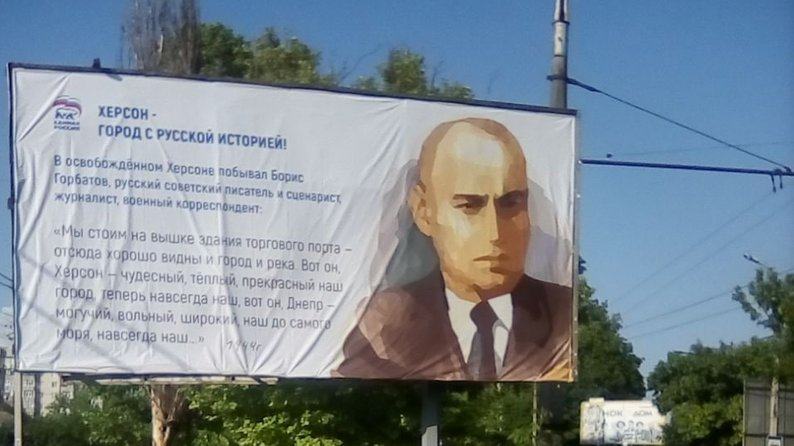
A photograph of one of these propaganda billboards in Kherson in the summer of 2022 shows Soviet writer and journalist Boris Gorbatov. Source: Suspilne Kherson.
Russian historiography and contemporary propaganda claim that the history of the city of Kherson began in 1778, with its supposed "founding" by Catherine II. They argue that "the historical belonging of Kherson to Russia is beyond question" and that the invasion of Ukraine is merely an affirmation of Putin's stance on the onset of an "irreversible process of restoring 'historical justice'—the return of originally Russian lands to their rightful owner, Russia."
However, local Ukrainian Kherson researchers and historians, united under the project publication "Khersonska Pravda," remind us that settlements on or near the current city’s site existed more than half a century before Catherine II’s decree (for example, the Kindiyka hamlets). They also highlight the Cossack settlements, wintering grounds, and a ferry across the Dnipro established by the Cossacks of the Oleshky Sich in the early 18th century.
Russian propagandists and so-called "war correspondents" have echoed Putin's rhetoric of "reunification of historical lands" and the notion that "Kherson is a Russian city." For instance, Rostyslav Shorokhov, a worker for the propaganda outlet "Rydovka," claimed on his Telegram channel—after the Ukrainian Armed Forces liberated the city—that the majority of Kherson's residents "truly believed in the 'Russian world,' and no one forced them to the referendum at gunpoint." He also shared photos of the voting process during the sham "referendum" and examples of propaganda materials, including posters, flyers, and banners used to persuade locals and create images for Russian federal television, presenting the idea that "Kherson is a Russian city."
Yet, despite the Russian army's promises to defend this "Russian city" to the last, a disgraceful "betrayal" took place as the occupation administration fled, and looting ensued in the city.
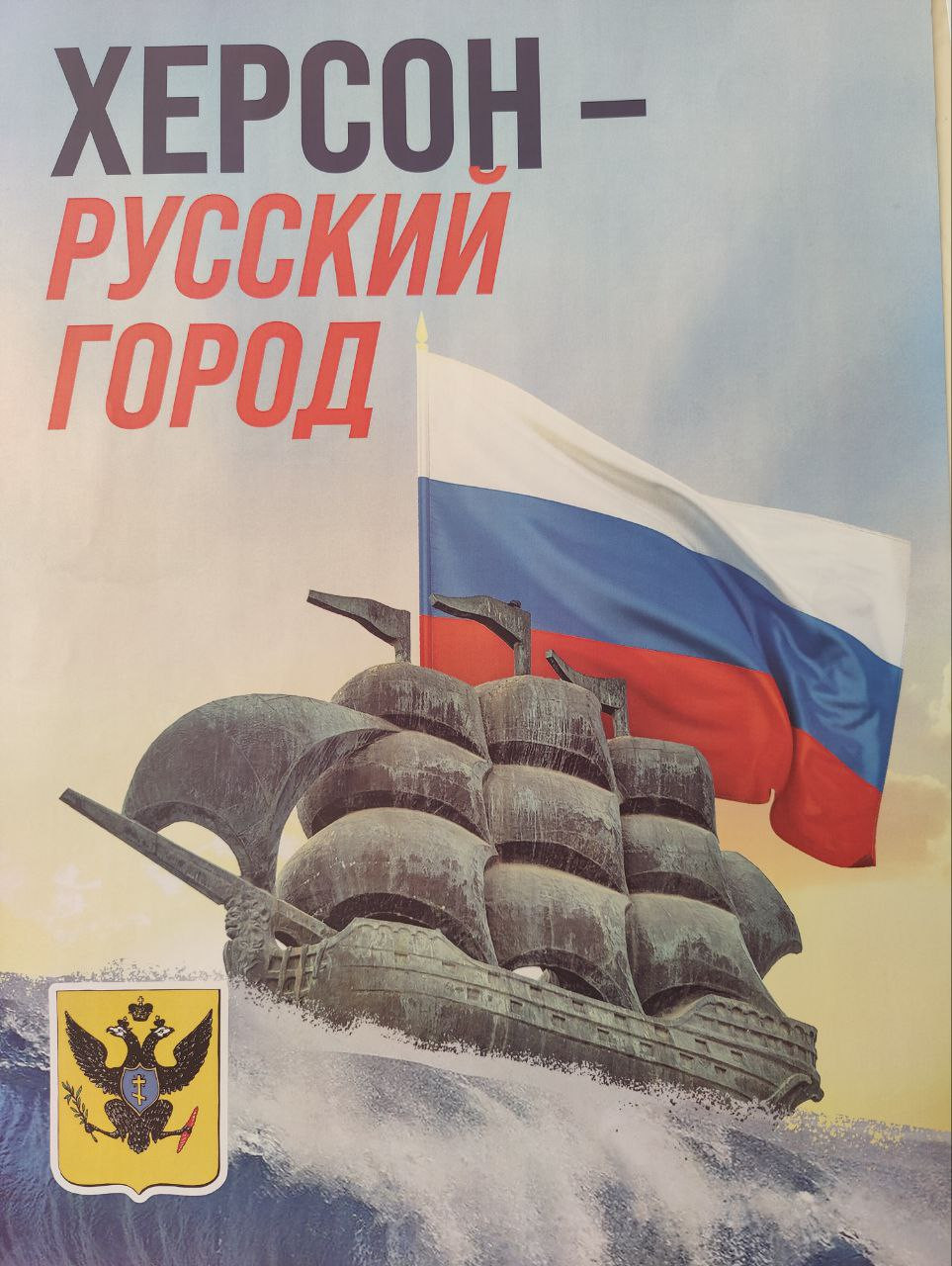
A propaganda poster with the slogan "Kherson is a Russian city." Source: Telegram channel of Russian propagandist Rostyslav Shorokhov from the "Rydovka" outlet.
"Russia is Here Forever" vs. "Kherson is Ukraine!"
One of the catchphrases of Russian propaganda related to Kherson was the statement "Russia is here forever," made by Andrei Turchak, Secretary of the General Council of Russia's ruling "United Russia" party, on May 6, 2022, after meeting with the self-proclaimed "head of the Kherson Regional State Administration," collaborator Volodymyr Saldo. Turchak said:
"I want to say once again: Russia is here forever. There should be no doubt about this. There will be no return to the past. We will live together and develop this rich region, rich in historical heritage and in the people who live here."
The now-deceased collaborator and pro-Russian "activist" Kyrylo Stremousov, whom Russian media described as the "deputy head of the military-civilian administration of Kherson region," also publicly insisted that "the return of Kherson region to Ukraine is now impossible. The future of our region is inextricably tied only to Russia."
The phrase "Russia is here forever" was subsequently repeated by Russian federal officials, politicians, and representatives of occupation administrations, including Galina Danilchenko, the head of occupied Melitopol. This phrase was a central focus in the agitation efforts leading up to the sham "referendum." The occupation administration placed various propaganda slogans on city billboards, including "Russians and Ukrainians are one, a single people."
Sergei Kiriyenko, Deputy Head of the Russian Presidential Administration, visited Kherson and Henichesk before the sham "referendum" and assured that the region's incorporation into Russia would be "complete, similar to Crimea's annexation." The expectation was that local residents would be loyal to the new occupation authorities and offer minimal resistance. On Russian federal TV channels, viewers were assured of the region's rapid integration into Russia, with Kiriyenko spreading Stremousov’s statements that Kherson had already begun to transition to the "ruble zone" as of May 1, 2022, and that the occupied territories would fully switch to the Russian currency within four months. Additionally, on the eve of the sham "referendum," the Russian disinformation campaign spread less rational arguments in its favor, such as claiming that "the Russian army will protect you from external aggression."
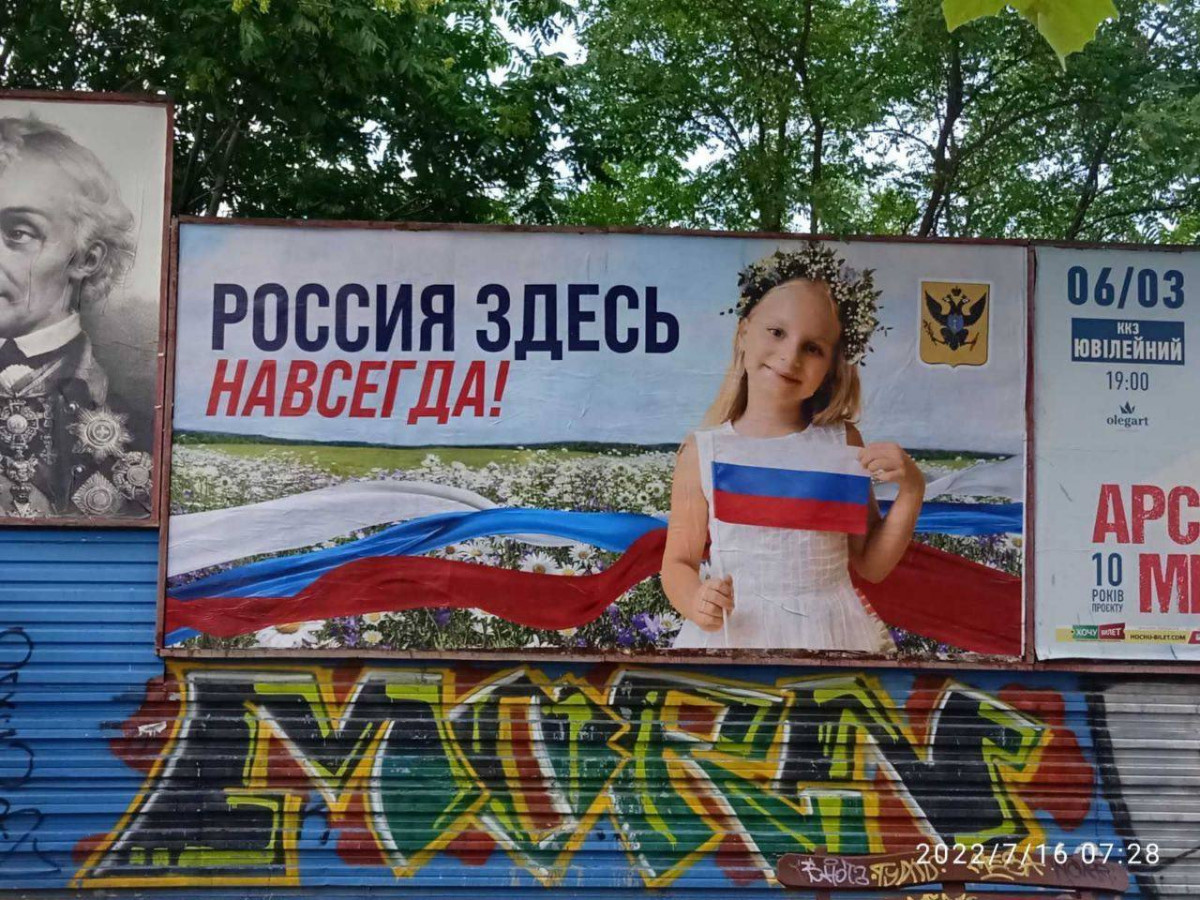
Propaganda on the streets of Kherson ahead of the so-called "referendum" featured slogans like "Russia is here forever!" Source: propaganda media outlet ZKherson.Live.
However, from the very first days of Russia's presence in the city, Kherson residents began holding rallies, protests, and acts of defiance, the first of which took place on March 5, 2022. During these demonstrations, citizens chanted, "Kherson is Ukraine!" While these actions were repeatedly suppressed and dispersed by Russian soldiers, residents continued to display Ukrainian symbols, flags, and ribbons. In March and April, peaceful demonstrations continued not only in Kherson but also in other settlements across the region as Ukrainians protested against Russia's plans to create another "people's republic."
Observing the pro-Ukrainian sentiment in occupied Kherson, the occupation administration and propagandists resorted to a familiar method—seizing and establishing new media outlets. In a study by Detector Media on the media landscape of temporarily occupied territories, evidence was collected showing that by June 2022, Russian television broadcasts had been established across the entire occupied territory of the Kherson region. Specialists from Russia's Ministry of Defense connected and reconfigured seven seized Kherson telecommunications facilities to broadcast Russian TV channels. Previously, Russian channels had only been accessible within Kherson itself. One of the newly created local channels in Kherson was "Tavria TV," organized by Alexander Malkevich, who was also setting up similar media projects in other occupied territories and was then the head of the media holding owned by Yevgeny Prigozhin, leader of the Wagner Group.
Russians also invested significant effort in spreading printed propaganda in occupied Kherson. Resources were allocated to restoring printing facilities, with announced newspaper circulations reaching up to 10,000 copies, and other initiatives were planned. However, many of these efforts were only partially realized due to the onset of the Ukrainian Defense Forces' operation to liberate the Kherson region.
How Russian propaganda perceived the city's liberation by the Ukrainian Armed Forces
In response to Russian General Surovikin’s statement in mid-October 2022 about an impending "difficult decision"—the prospect of the Russian army retreating from the right bank of the Dnipro—Russian propagandist Sergey Mardan wrote on his Telegram channel: "Today, the special military operation ends with a retreat from the Russian city of Kherson. And a long war begins. Believe me—a long one."
Soon after, he began referring to the regional center as "Kherson occupied by s**ts." Networks of propagandist Telegram channels, widely used in the occupied part of the Kherson region, also adopted this inverted logic, referring to the regional center as "temporarily occupied Kherson" and mocking the efforts of Ukrainian volunteers to deliver humanitarian aid to settlements under Russian control.
Oleksandr Khodakovsky, former leader of the "Patriotic Forces of Donbas" and head of the "security service" of Russian occupiers in Donetsk, called the retreat of Russian forces a "difficult decision to leave the Russian city" on his Telegram channel.
Fugitive former MP Oleg Tsaryov, on the anniversary of Kherson's liberation in November 2023, noted that Russian authorities had practically stopped mentioning the city in their official rhetoric even though all Russian maps still include the illegally annexed territories of Kherson and Zaporizhzhia regions within their administrative boundaries:
"I don’t recall any official yesterday (or the day before) justifying the necessity of withdrawing troops from Kherson or affirming that this is our land and Kherson will be liberated. Do you remember? Neither do I. But it should have been said."
Russian propagandists echoed the same sentiment and advocated for the restoration of the Russian Empire, Dmitry Olshansky, editor-in-chief of "Russian Life." He remarked:
"There is absolutely no hint that Kherson still has any relation to the motherland, that it is occupied, that it will be liberated, that it is our land, that its return is one of the goals of what is happening, and so on. No one. Ever. Nothing."
Over time, propagandists have somewhat "come to terms" with the idea that the prospect of reclaiming Kherson by military means is dubious. Propagandist Sergey Mardan, in particular, began writing about the occupied left bank of the Dnipro as the restoration of the "Taurida Governorate," suggesting that it would be difficult to make part of Kherson region into a separate "federal subject," so it should be merged with the already long-occupied Crimea.
Predictably, propagandists do not attribute Ukraine’s recapture of Kherson to miscalculations by Russian generals or the skillful planning and deployment of the Ukrainian Armed Forces. Instead, the "blame" is placed on the "unrepressed Ukrainian underground." Mardan, in his "analysis," wrote that the occupation authorities should have started not with propaganda and billboards but with harsh repression, arrests, and purges. He claimed that Kherson residents "spat in the direction of the billboards" even while the Russian army was still in the city, and therefore, the Russian Guard should have been deployed to enforce punitive practices reminiscent of Soviet secret police.
"In abandoned Kherson, the undeterred 'Banderites' happily hang Ukrainian flags on buildings. It's clear that the flags were hidden before, but the people didn't really hide. This raises the question: What should we do with the underground in the liberated territories? How to filter out the dissenters, the disappointed, and those who are lying low?" Mardan wrote on his Telegram channel the day after the Ukrainian Armed Forces liberated Kherson. Thus, the narrative has shifted away from any notion of convincing locals or promoting "voluntary Russification."
Official statements, “legal” justifications, and simulated “resistance to occupation”
The rhetoric of Russian propaganda regarding Kherson has not undergone significant changes in the two years since the city's liberation. Throughout 2024, the words "Kherson" and "Kherson region" appeared on the Kremlin's official website a total of 12 times, mostly in lists of the so-called "new regions of Russia," referring to the occupied and annexed parts of Kherson, Zaporizhzhia, Donetsk, and Luhansk regions. Only three times did the city of Kherson itself appear in publications directly related to Russian policy on the Kherson and Kherson region. Notably, in the transcript of a meeting from November 5, 2024, Putin expressed "hope" that the Russian army would reoccupy Kherson by the following year:
“Next year marks the 80th anniversary of the Soviet people's victory in the Great Patriotic War. Let’s celebrate it not only on Red Square but across all regions of the country: in Luhansk, in Donetsk, and, hopefully, in Kherson, perhaps it will happen.”
In other publications on the Kremlin website, representatives of the occupation administrations, such as Galina Raiko, the “rector” of the “Kherson Technical University,” which had been relocated to Henichesk, used the term “occupied Kherson” during a videoconference with Putin. During the same call, Putin referred to September 30 as the “Day of the Reunification of Novorossiya with the Russian Federation.” On Kherson City Day in 2024, celebrated on the third Saturday of September, Volodymyr Saldo, the Kremlin’s appointee on the occupied territory of Kherson region, promised on the occupation-controlled “Tavria” television channel that Russia would retake the regional center:
"We will return, and together, we will celebrate both City Day and the day of our return and victory! Happy holidays, Kherson!"
In 2023–2024, Margarita Simonyan, the head of the propaganda outlet "Russia Today," mentioned the Kherson region only five times in her Telegram channel, twice specifically on September 30. She never once mentioned the city of Kherson in her channel, which has over half a million followers. Meanwhile, Sergey Markov, former Russian State Duma deputy and "political analyst," mentioned Kherson more frequently in the context of potential future negotiations between Ukraine and Russia. He repeatedly argued that Ukraine is supposedly "occupying" its own territories, asserting that, from a Russian legal perspective, these areas were declared Russian territory on September 30, 2022:
"September 30 is the day of the reunification of new regions with Russia. It is also a day of occupation—occupation of Russian territory by Ukraine. From this day, Ukraine legally occupies Zaporizhzhia, Kherson, Sloviansk, Kramatorsk, and Bakhmut. To this day, Russia has legally recognized these cities as part of Ukraine. Legally, the fighting now takes place on Russian territory."
In late October, amid a wave of Russian offensive operations in the Donetsk region, Russian war correspondent Yuriy Kotenok, author of a Z-channel with nearly 400,000 subscribers, assured his readers that the Russian army could advance to a “strategic” level, which would include the reoccupation of Kherson:
“By reclaiming Kherson, we’ll be on the other side of the river. If the enemy starts acting foolishly, we’ll keep pushing forward, advancing toward Transnistria and Odesa. Why stop now? The President already said it: why should we sit down to talk when the enemy is running out of ammunition?”
A study of the pro-Russian segment of Telegram has revealed channels that either highlight or simulate the activities of the so-called "underground" and "resistance movement against Ukrainian occupation" that supposedly exists in the occupied left-bank Kherson region and in the city of Kherson itself. One such channel, created in July 2023, claims to represent the "Russian Kherson" resistance organization." The channel has fewer than 2,000 followers. It mainly shares video messages from an anonymous figure in a balaclava, with altered audio, against the backdrop of a red flag featuring Soviet communist symbols (hammer and sickle). This anonymous individual, without providing any evidence, describes the organization's activities, such as the alleged elimination of "Ukrainian Nazis," "Zelenskyy’s militants," technical equipment, and weapons.
In one post, photographs were shared showing graffiti with Soviet symbols—a red star, hammer, and sickle, and the word "Resistance" painted over graffiti of the Ukrainian flag. The so-called "governor of Kherson region," Volodymyr Saldo, with an audience of nearly 45,000 followers on his Telegram channel, has also spoken about these "underground fighters." He has published videos and posts identical to those shared on the previously mentioned Telegram channel, further amplifying the narrative of a supposed resistance movement in the region.
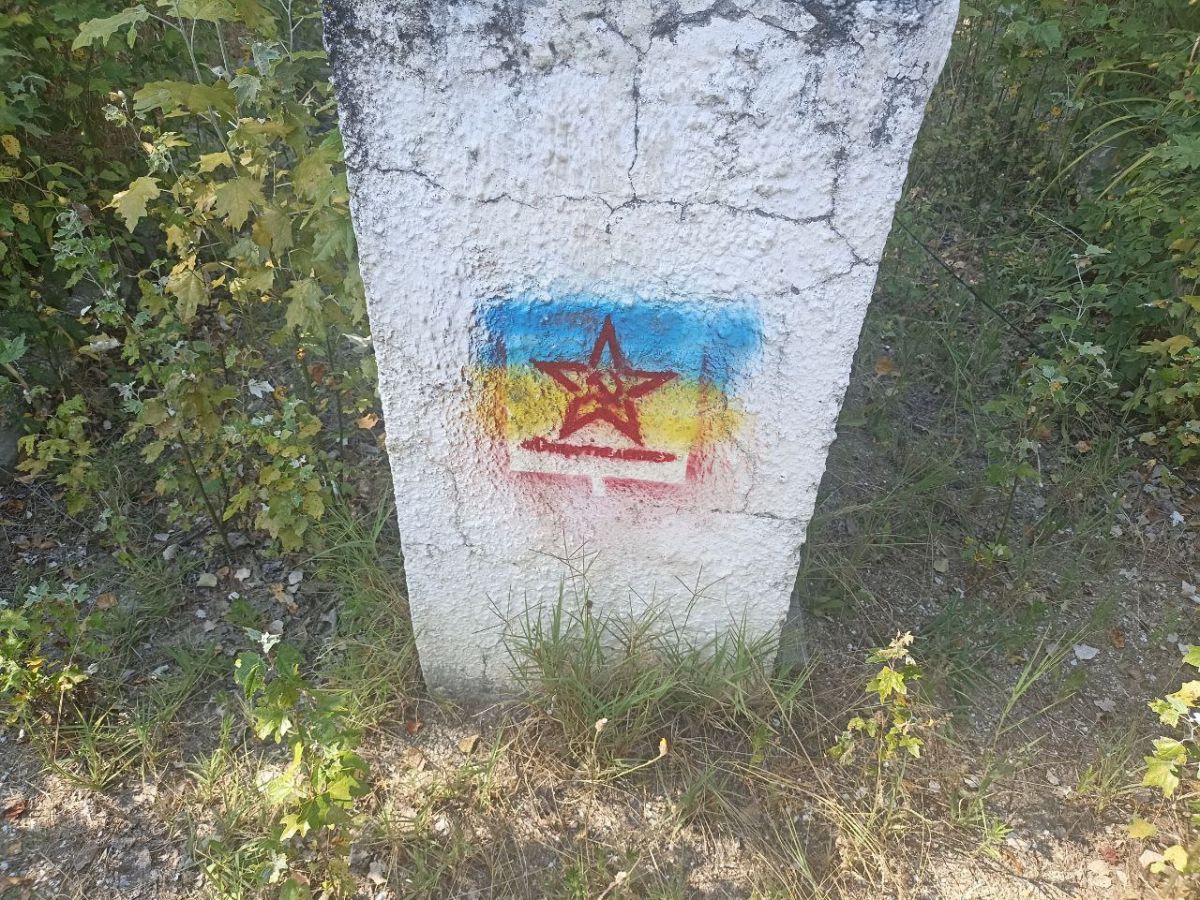
A photograph of graffiti with Soviet symbols painted over the Ukrainian flag, along with the word “Resistance,” allegedly taken in Kherson. Source: anonymous Telegram channel.
Other similar small anonymous Telegram channels regularly post messages about the “horrors of life under occupation” and spread fake information about the Ukrainian Armed Forces (ZSU). Russia frequently employs reverse tactics in its propaganda, attempting to blame “the other side” for the crimes it commits. This tactic is used to deflect attention from its own crimes on genuinely occupied Ukrainian territories and to create an appearance of equivalence between the aggressor and its victim in the eyes of an outside observer who may be unfamiliar with the full context.
Russia will likely continue emphasizing its version of history regarding Kherson. Notably, before retreating, the occupation administration removed the remains of Prince Potemkin, which were kept in one of Kherson's cathedrals, and dismantled his monument. Other statues of Russian military figures, such as Commander Alexander Suvorov and Admiral Fyodor Ushakov, were also removed from the city. Under the guise of “saving exhibits,” the Russian forces looted Kherson’s museums, with most valuables transported to Crimea during the military retreat.
Despite the fake news and disinformation spread by Russian propaganda, no atrocities by “Ukrainian Nazis” or “mass executions of Kherson residents” took place following the city’s liberation. Investigations have begun regarding certain residents who collaborated with the Russian occupation administration. Detector Media has been publishing a series of articles on media figures who voluntarily chose to collaborate with Russia. Legal cases continue against organizers of the sham “referendum” and police officers who switched sides, with some trials resulting in verdicts.
Today, Kherson and its residents continue to suffer from Russian war crimes, with Russian forces targeting civilians in the city. Missile strikes on Kherson persist, seen as Russia’s form of retaliation against the city’s defiance. Therefore, it remains important to tell the story of Kherson and its people in both Ukrainian media and on the international stage, especially on the anniversary of the city’s liberation.
Main page illustration: Natalia Lobach

